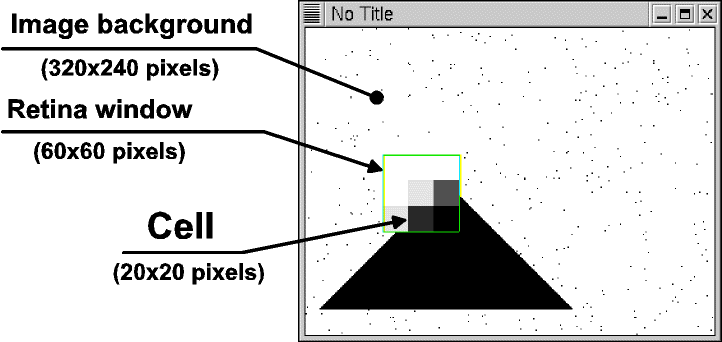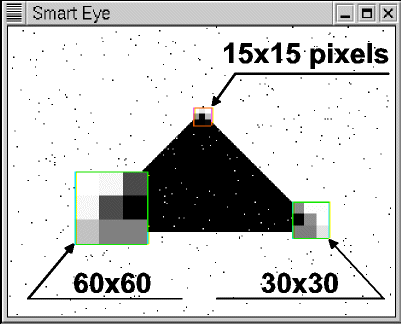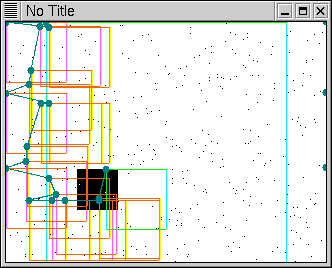
Active Vision Project > Overview > Coevolution
Dario Floreano,
Toshifumi Kato,
Davide Marocco and
Eric Sauser
| We show that complex visual tasks, such as position- and size-invariant shape recognition and navigation in the environment, can be tackled with simple architectures generated by a coevolutionary process of active vision and feature selection. Behavioral machines equipped with primitive vision systems and direct pathways between visual and motor neurons are evolved while they freely interact with their environments. We describe the application of this methodology in three sets of experiments, namely, shape discrimination, car driving, and robot navigation. We show that these systems develop sensitivity to a number of oriented, retinotopic, visual-feature-oriented edges, corners, height, and a behavioral repertoire to locate, bring, and keep these features in sensitive regions of the vision system, resembling strategies observed in simple insects. |

Toshifumi Kato and Dario
Floreano





